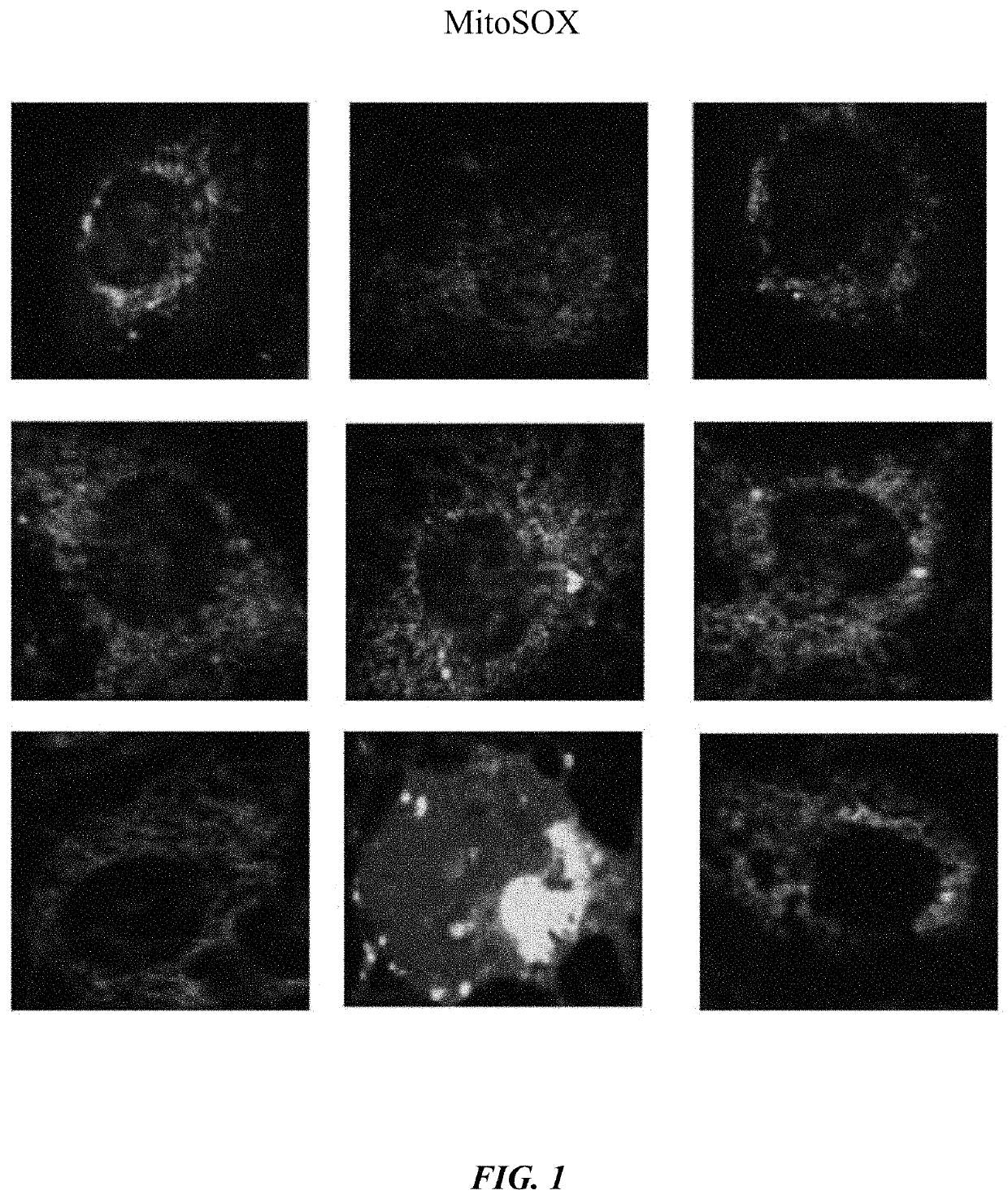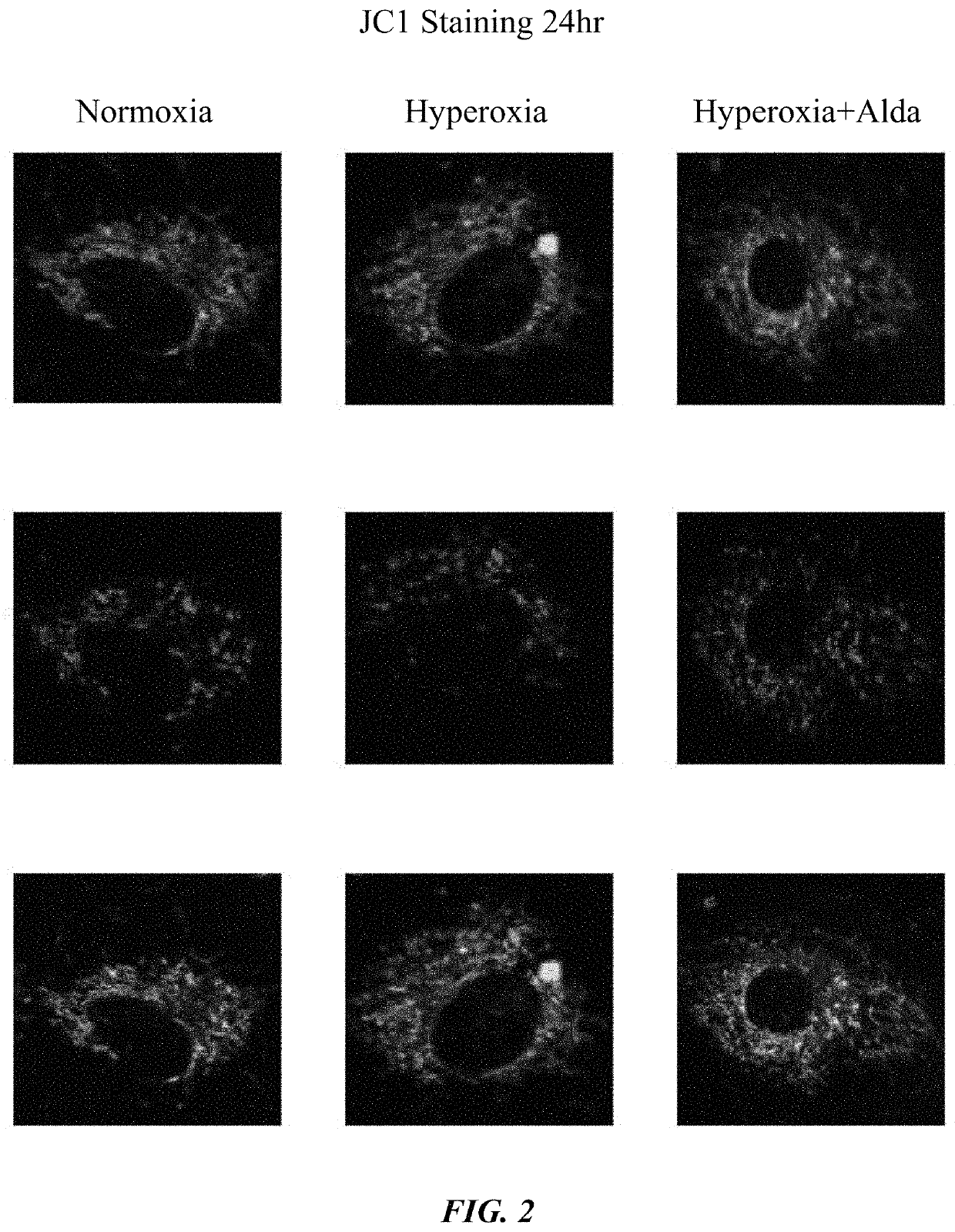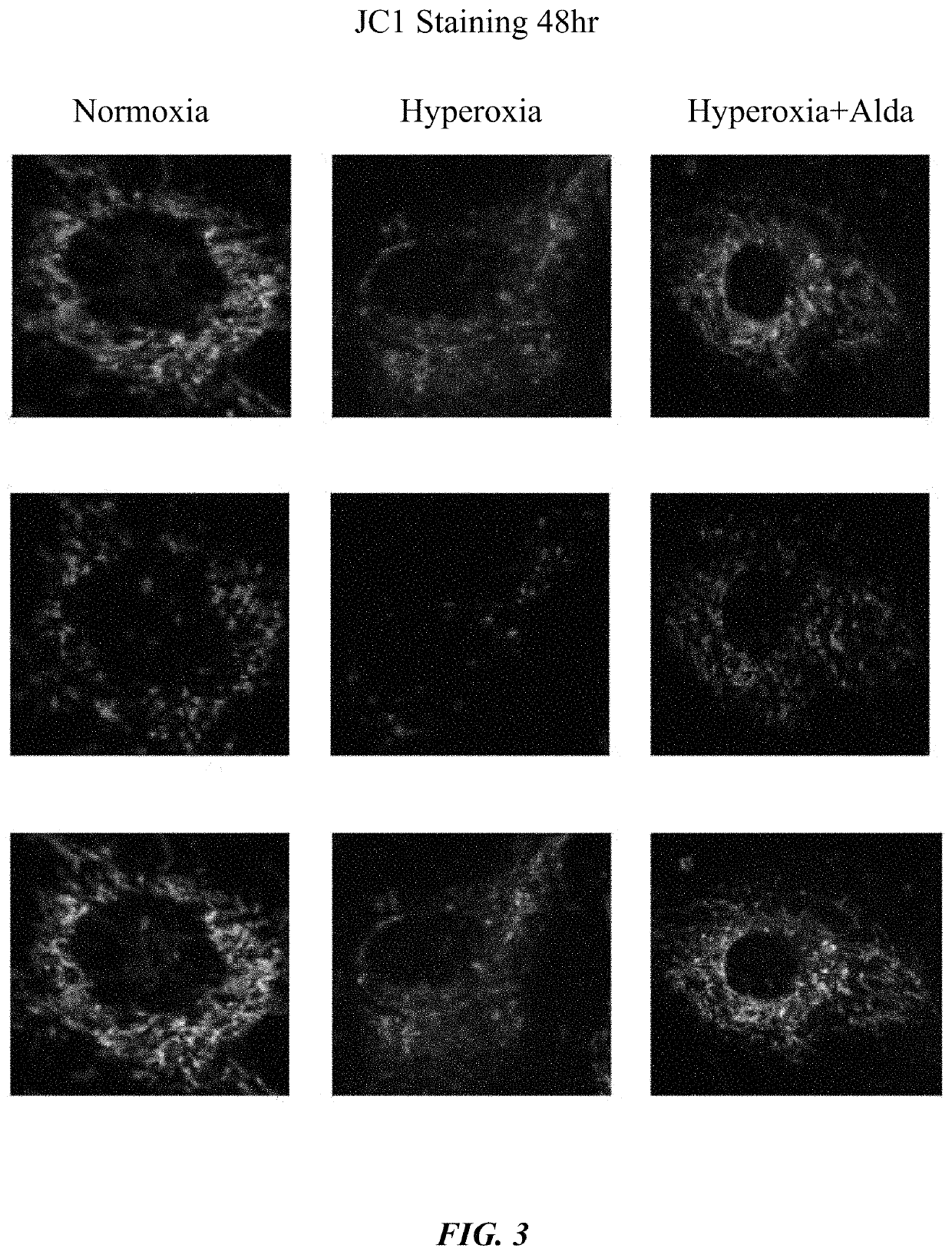ALDA-1 treatment and prevention of pulmonary disease
a technology for pulmonary disease and allergy, applied in the field of allergy and/or pulmonary disease and the treatment of allergic and/or pulmonary diseases, can solve the problems of limited information pertaining to the aldh2 interactionome, and achieve the effects of suppressing mitochondrial reactive oxygen species production, preventing endothelial cell injury, and reducing damage to endothelial cells
- Summary
- Abstract
- Description
- Claims
- Application Information
AI Technical Summary
Benefits of technology
Problems solved by technology
Method used
Image
Examples
example 1
diated Modulation of ALDH2 is an Effective Target for Remediation of Endothelial Dysfunction Through Preservation of Mitochondria
[0058]Materials and Methods.
[0059]Cells obtained were human microvascular endothelial cells (HMVECs). Cell culture medium was EBM-2 containing 10% FBS plus antibiotics. Assays were MitoSOX, JC1, Histology, Western blot, and ALDH2 activity. Antibodies used were mouse anti-ALDH2 antibody, Cytochrome C, and Beclin (cell signaling).
[0060]HMVECs were seeded and, after reaching confluence, treated with DMSO and Alda-1. Cells were then exposed to normoxia or hyperoxia at different time points. After 24, 48, and 72 hours, cells were collected for mitochondrial analyses.
[0061]Results.
[0062]Cells treated with Alda-1 displayed elevated ALDH2 activity during both normoxia and hyperoxia. It was also observed that Alda-1 rescued mitochondrial membrane potential, decreased Cytochrome C release, and suppressed mitochondrial ROS production in HMVECs. See FIGS. 1-4.
[0063]FI...
example 2
[0066]It is an object of the current invention to evaluate the effects of Alda-1 on lung endothelial cells in vivo during hyperoxic injury.
[0067]Materials and Methods.
[0068]Lung endothelial cells will be treated with Alda-1 and a pharmaceutically acceptable excipient. Cells will then be exposed to normoxia or hyperoxia at different time points. After 24, 48, and 72 hours, cells will be collected for mitochondrial analyses.
[0069]Results.
[0070]Cells treated with Alda-1 will display elevated ALDH2 activity during both normoxia and hyperoxia. It will also be observed that Alda-1 rescued mitochondrial membrane potential, decreased Cytochrome C release, and suppressed mitochondrial ROS production in lung endothelial cells.
example 3
eatment In Vitro Diminishes the Accumulation of 4HNE and Reduces Oxidative Stress by Decreasing ROS During Hyperoxia
[0071]The inventors examined the capacity of Alda-1 (benzodioxyl dichlororobezamide) to shield the oxidative stress in HMVEC (2). Briefly, HMVEC pretreated with 20 μM of Alda-1 prior to exposure of hyperoxia show a diminished accumulation of toxic compound 4HNE, a significant decrease in oxidative stress and a significant decrease in apoptotic activity. Furthermore, Alda-1 pretreated samples in hyperoxia show improved Aldh2 activity and ALDH2 expression and significantly enriched mitochondrial membrane potential. Therefore, activation of ALDH2 may inhibit the endothelial dysfunction caused by hyperoxic exposure.
[0072]Acute lung injury (ALI) (3) is a serious clinical complication of a respiratory fiasco affecting 200,000 people in US annually (4) with the cases increasing yearly. ALI has caused the death of 70,000 people alone in the USA (5). One type of ALI is acute re...
PUM
| Property | Measurement | Unit |
|---|---|---|
| oxidative stress | aaaaa | aaaaa |
| mitochondrial membrane potential | aaaaa | aaaaa |
| Oxidative Stress | aaaaa | aaaaa |
Abstract
Description
Claims
Application Information
 Login to View More
Login to View More - R&D
- Intellectual Property
- Life Sciences
- Materials
- Tech Scout
- Unparalleled Data Quality
- Higher Quality Content
- 60% Fewer Hallucinations
Browse by: Latest US Patents, China's latest patents, Technical Efficacy Thesaurus, Application Domain, Technology Topic, Popular Technical Reports.
© 2025 PatSnap. All rights reserved.Legal|Privacy policy|Modern Slavery Act Transparency Statement|Sitemap|About US| Contact US: help@patsnap.com



